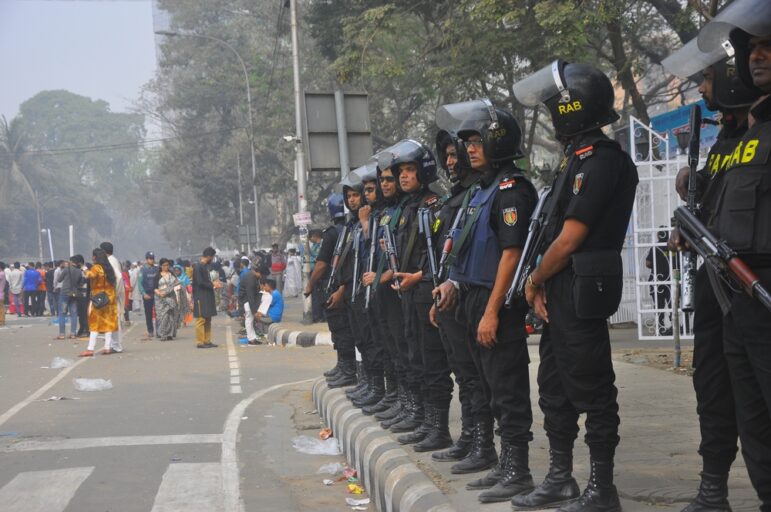

Editor’s Pick: 2021’s Best Investigative Stories in India
Read this article in
Until a few years ago, India seemed like the picture of a vibrant democracy, with a robust free media and a soaring growth rate. But thanks to the rise of aggressive Hindu nationalism and its torchbearer — ruling Prime Minister and Bharatiya Janata Party leader Narendra Modi, most of the indicators of modern democracy are now on the decline in India. Journalists have been booked on frivolous charges of sedition and dubbed “anti-nationals.” Online and legal harassment of free and independent media personnel at the hands of state and non-state actors have become commonplace. Meanwhile, the majority of news channels, have turned into the propaganda arm of the ruling party.
As the establishment news outlets quietly tow the government line, a few newly created digital media platforms have taken the lead in “independent and free journalism.” These reporters not only fight legal harassment in the courts, but also expose the hidden networks of troll armies, led by agents supporting the ruling elites. During the past year, these intrepid investigative journalists, mainly from the English-language press, have published some groundbreaking stories and forced the rest of the legacy media to follow them. — Deepak Tiwari, GIJN Hindi Editor
Surveillance Nation: Inside Modi’s Plan To Monitor Every Indian
The Reporters Collective is a nonprofit run by a few like-minded, well-meaning investigative reporters. One of them, Kumar Sambhav, used right-to-information document requests to reveal an Orwellian plan by the Indian government to track all of its citizens through a comprehensive database, on the pretext of monitoring welfare programs. Sambhav’s exposé showed how Prime Minister Modi’s invasive surveillance plans are designed to watch Indians from cradle to grave, so that “every bit of our lives will be linked, recorded, and monitored.”
Investigating the Delhi Riots by Scanning Social Media
India’s leading nonprofit digital media platform The Wire, which publishes in four languages, has been a leader of free and fair journalism. Its reporters, including founding editor Siddharth Varadrajan, have been the frequent target of government harassment, including defamation and sedition cases. Many journalists associated with the media outlet were found to be targeted for surveillance under the Pegasus Project.
Using information pulled from social media accounts, Wire reporters Alishan Jafri, Shehlat Maknoon Wani, and Varadarajan himself, spent months looking into the Delhi riots, in which 53 people were killed and which destroyed hundreds of homes and shops. Since the Delhi police failed to conduct a proper investigation into the riots, the reporters uncovered the fact that the victims were mainly from the minority Muslim community. The investigations also exposed the men who played a prominent role in spreading hate, mobilizing the mobs, and then instigating the violence.
Using Satellite Imagery, NDTV Verifies China’s Incursion into Indian Territory
India and China share a 2,000 mile-long border, which has been a point of contention between the two countries for decades. The two nations fought a deadly war over the border territory in 1962 and skirmishes last year lead to the deaths of many soldiers.
Modi’s ultra-nationalist government has repeatedly denied that there has been any Chinese incursion into its territory. However, India’s leading news channel, NDTV, exposed this claim as a lie using satellite images. In a series of stories, the news channel documented China-constructed enclaves inside the Indian state of Arunachal Pradesh. The Indian news channel’s reporting was later confirmed by a US Department of Defense report.
Pegasus Project’s Impact in India
The Wire’s role in the Pegasus Project investigation shook the Indian democratic system, prompting the Supreme Court of India to convene a high-level committee after the Modi government refused to admit it was snooping on opposition leaders and others on the pretext of national security.
According to The Wire’s reporting, 300 verified Indian mobile phone numbers — including those used by ministers, opposition leaders, journalists, the legal community, businessmen, government officials, scientists, rights activists and others — were believed to have been on the target list provided to the Israeli tech company, NSO Group. Per the report, a forensic analysis of a small sample of the phones “revealed clear signs of targeting by Pegasus spyware in 37 phones, of which 10 are Indian.”
Inside the Hindu IT Cell
An investigation published by Newslaundry, which was reported by Srishti Jaswal and Shreegireesh Jalihal from The Reporter’s Collective, exposed the ecosystem of right-wing Hindu trolls using social media to attack those they believe to have made “anti-Hindu” remarks. The network works by prompting members to file legal complaints and pursue police action against social media users they believe to be “Hindu haters,” vowing to “teach such offenders a lesson.” To carry out their online harassment, these trolls worked with a team of lawyers and “cyber volunteers.”
Remaking India’s Agricultural Economy for the Private Sector
This investigative story by eminent investigative reporter Hartosh Singh Bal of The Caravan magazine exposed the link between three, now-repealed agriculture laws passed by the Indian parliament and two industrial companies close to Modi. This intrepid reporting last February came amidst months of massive protests across the country as farmers turned out in opposition to new, market-friendly government regulations.
Being Trans Inside an Indian Prison
As a part of the series “Barred – The Prisons Project,” and in partnership with the Pulitzer Center on Crisis Reporting, reporter Sukanya Shantha wrote this compelling look at the lives of trans people inside Indian prisons. In the exposé, the reporter found examples of systemic misgendering, harassment, and sexual violence, despite the Indian legal system’s rulings that trans people deserve to be recognized and treated accordingly to the gender they identify with.
Fact-checking India’s Official COVID-19 Figures
Two reporters from Newslaundry — Chintan Patel and Vivek Kaul — analyzed and investigated the data relating to the coronavirus published by various state governments and India’s central government. They discovered a lot of ambiguity and inconsistencies in the official data and came to the conclusion that the Modi government manipulated and minimized the official numbers to hide the number of deaths.
Exposing the Truth About COVID-19 Breakthrough Infections
This data investigation by IndiaSpend – a GIJN member — exposed false claims by the Indian government that only two to four people out of every 10,000 vaccinated against COVID-19 later contracted the virus, in so-called breakthrough infections. The reporter, Rukmini S, showed that health officials failed to follow best practices in tracking the efficacy of the two Indian-based vaccines, Covishield and Covaxin, giving the public an inaccurate picture of how well they worked.
How the Modi Government’s Failure Led to India’s COVID-19 Catastrophe
For this cover story for The Caravan, reporter Chahat Rana performed a deep dive into the pandemic response of the Indian government. Her long-form investigation revealed how Modi badly botched the country’s second COVID-19 wave, turning it into a major catastrophe that resulted in thousands dying outside hospitals due to a lack of oxygen.
Additional Resources
How Local Reporters in India Exposed the Pandemic’s True Death Toll
The Story of India’s COVID-19 Pandemic, as Told by Its Women Journalists
How Advertising Fuels Media Capture in India
Deepak Tiwari is GIJN’s Hindi editor, a senior Indian journalist, and former vice-chancellor of Makhanlal Chaturvedi National University of Journalism and Communication in Bhopal. He has over 25 years of experience as a reporter, sub-editor, television commentator, media consultant, and managing editor of a media start-up, and is the author of two books.



















